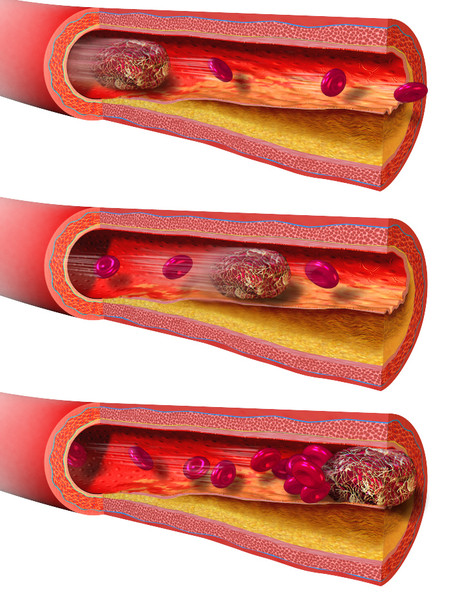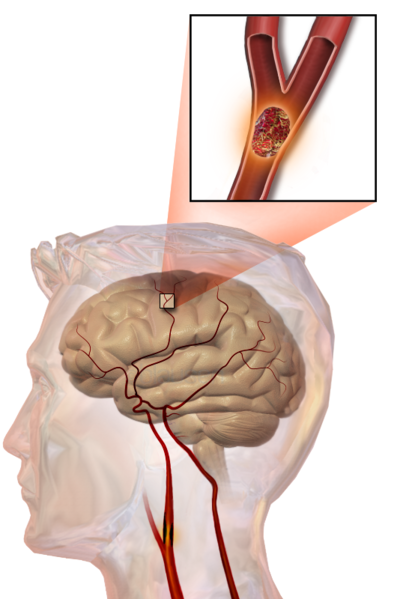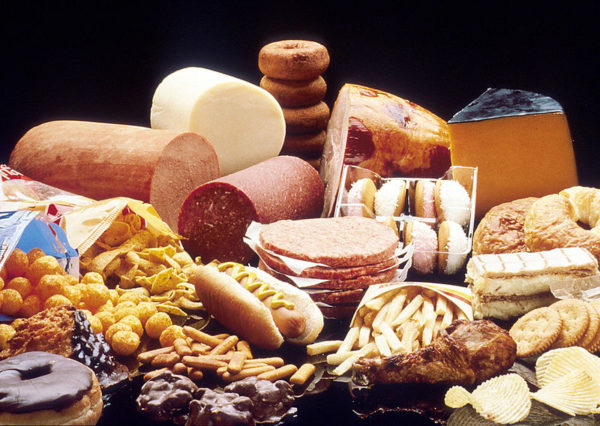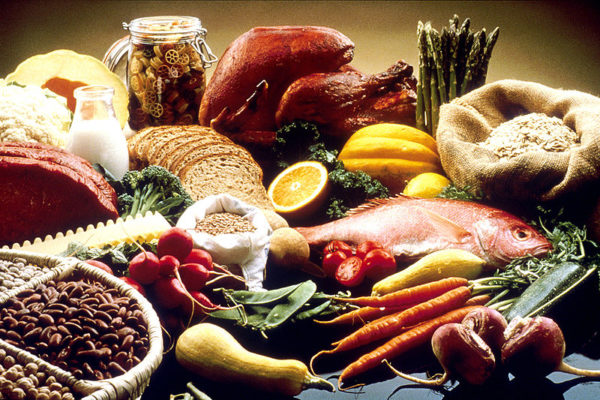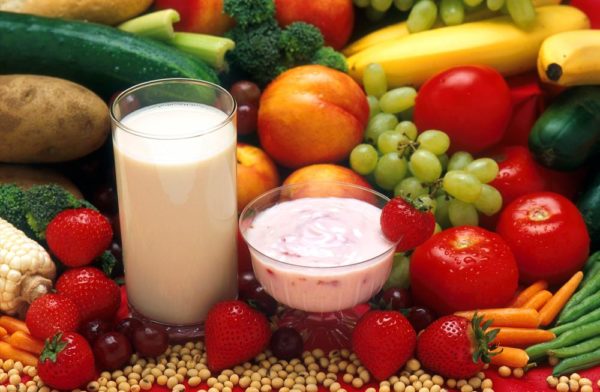Features
Ask Dr. Craig!: Bad Cholesterol
 Dr. Craig is a BellaNaija columnist and one of the doctors who writes for BN Doctors’ Lounge {Get familiar here}. The idea behind ‘Ask Dr. Craig!‘ is for BN readers to get quick sharp answers to niggling medical issues that they have. This does not in anyway mean that readers should not go to their doctors. However, sometimes you just need a human face to give answers to those fast, burning medical concerns our readers have.
Dr. Craig is a BellaNaija columnist and one of the doctors who writes for BN Doctors’ Lounge {Get familiar here}. The idea behind ‘Ask Dr. Craig!‘ is for BN readers to get quick sharp answers to niggling medical issues that they have. This does not in anyway mean that readers should not go to their doctors. However, sometimes you just need a human face to give answers to those fast, burning medical concerns our readers have.
Send your questions for Dr. Craig to features(at)bellanaija(dot)com stating your full name and where you are writing from. (Your name will never be published) The editor reserves the right to edit submissions for content brevity and clarity. We regret that we cannot provide individual answers to questions sent in and cannot state at which exact date answers would be published.
***
Dear Dr. Craig
My office conducts a yearly occupational health screening for all its employees and I have never had a problem with any of my results since I started working here in 2010. Today the nurse has told me that the results of the last test show that I have high levels of bad cholesterol in my blood and that she has scheduled an appointment for me to see the company Doctor in a week’s time. I find this very confusing because I go to the gym once or twice a week and I believe myself to be very fit and healthy. My job is intense as I work offshore and I know that passing my annual medical is one of the prerequisites for remaining employed.
Please doctor what is this “bad cholesterol” and is there anything I can do to reduce it?
Offshore-Worker. Bonny
+++
Dear Offshore-Worker,
Thank you for your question about high cholesterol.
A person has High Cholesterol or Hypercholesterolemia when their blood cholesterol levels are above the cut off for a normal healthy individual. High cholesterol is a leading risk factor for cardiovascular (heart) disease which is one the leading causes of sudden death.
What is Cholesterol?
Cholesterol is a kind of fat called a lipid and it plays a very important role in keeping your body healthy. Cholesterol is essential for maintaining the proper functioning of cell membranes and is used by the body to produce hormones like oestrogen and progesterone in women and testosterone in men. It is also used in the production of Vitamin D and bile. Almost 80% of all the cholesterol you need is produced by your liver and is circulated throughout the body in the blood.
Cholesterol like all fats does not dissolve in water and since it is not water soluble cannot be carried in the blood. For it to get transported from the liver where it is produced, to the tissues and organs where it is needed it combines with a protein to form a compound known as Lipoprotein (fat+protein). Lipoproteins are like vehicles that help to transport cholesterol around the body. There are two* major types of cholesterol containing lipoproteins and they are called Low Density Lipoprotein- LDL (which is ironically bigger), and High Density Lipoprotein- HDL (which is smaller).
An interesting way to describe the way cholesterol is transported in the body is to compare it to a busy dual carriage way. On one side of the express is the LDL which is carrying cholesterol from the liver on its way to the body’s cells. Imagine LDL as a big long-distance “Ekene Dili Chukwu” bus, packed full of passengers and goods on its way to the village during Christmas.
On the other side is the HDL which is taking used or excess cholesterol away from the cells and back to the liver to be reprocessed. Imagine HDL as a small “Peace Mass transit” bus returning half empty from the village on Boxing Day because very few passengers are travelling in that direction.
When there are too many “Ekene Dili Chukwu” buses travelling on the road there will be lots of traffic and there is a higher chance of serious road traffic accidents. In the same way, when there is too much LDL cholesterol in the blood, it can make the blood sluggish and this increases the risk of developing serious heart diseases.
Why is High Cholesterol a problem?
Have you ever seen a tipper truck full of sand or gravel speeding past and noticed how some of the contents in the back can fall off and get scattered along the way as the vehicle goes down the road? In the same way, when there are high levels of LDL cholesterol in the blood some of the cholesterol can get deposited in the walls of arteries. Cholesterol is very prone to damage from “free radicals” which are chemical substances that can destroy its normal structure. Cholesterol that has been altered by this oxidative damage it is more likely to deposit a fatty substance called “atheroma plaque” in the lining of the arteries. You know how cooking oil that has been sitting in a bottle on the shelf for a long time can congeal and become rancid? That’s one way to describe an atheroma. This plaque formation can cause the blood vessels to become rigid and stiff and lose their elasticity. If LDL cholesterol levels remain high then the plaques will continue to grow and over a period of time will begin to narrow the blood vessels. This is known as Atherosclerosis. When blood vessels are narrowed the tissues and organs they supply are slowly starved of oxygen rich blood. If the narrowing persists, blood flow can be cut off completely leading to tissue and organ death.
But that’s not all. Normal blood, for as long as it is in the veins and arteries will not clot and will remain a free flowing fluid. However, when cholesterol levels in the blood are too high it can cause blood to become sluggish as it flows through the vessels. Sluggish blood coupled with narrowed arteries makes it more likely for the blood to clot inside vessels. When a clot forms it can completely block blood flow to vital organs (thrombus) and if the clot breaks up, small chunks can detach (embolus) and be carried to distant organs where they block blood vessels and lead to blood starvation known as ischemia. When blood flow is cut off in the arteries of the heart, we call this a heart attack and when it happens in the brain it is called a stroke.
This is why LDL is known as Bad Cholesterol.
There are two ways of treating hypercholesterolemia. One is by changing your diet and adjusting your lifestyle and the other is by taking a cholesterol lowering drug.
A radical dietary and lifestyle change is very effective in lowering cholesterol levels and it has the added benefit of also reducing other health related problems like obesity, arthritis, cancer and heart disease. This will include:
Reducing LDL
Earlier I mentioned that 80% of the cholesterol you need is produced in the liver. The other 20% comes from dietary sources. Trans-fats and polyunsaturated fats are the main dietary sources of cholesterol. Foods that contain trans-fat include:
– Fatty meats such as corned beef, hot dogs, sausage, bacon, and processed meats are high in trans fats and poly unsaturated fats. These can be replaced with chicken or turkey, lean beef, lamb, and fish.
– Pastry and flour based foods such as meat pies, bread, cakes, chin-chin, and other snacks made with saturated or hydrogenated fat, whole eggs, or whole milk. Try low-fat baked goods, and avoid ketchup or mayonnaise or use only sparingly.
– Fast foods like hamburgers, fries, fried chicken are very high in both total fat and saturated fat. Try instead vegetable salads or fruit salads or smoothies.
Increasing HDL
HDL is your good cholesterol and eating foods high in HDL will help keep your arteries healthy. HDL is able to pick up any free cholesterol it finds in the arteries and take it back to the liver. One could describe HDL as the clean-up crew driving behind the tipper described above.
Foods that contain or increase HDL include:
– Beans
– Oats
– Garlic and onions
– Oily fish
– Olive oil
– Avocados
– Seafood
Reducing exposure to Free Radicals
The real culprit in atherosclerosis is not cholesterol itself but cholesterol that has been damaged by free radicals. Free radicals are substances in the environment or in our food that can destroy the chemical structure of our body’s cells and are a leading cause of atherosclerosis, cancer and many other diseases. Examples of sources of free radicals include:
– Barbequed food: e.g. Suya
– Smoked food: e.g. Smoked fish
– Ultraviolet rays from the sun
– Industrial chemicals
– Smoking: e.g. Cigarettes, Canabis, Shisha
– Processed foods: e.g canned or tinned food
– Fizzy drinks
Increasing Anti-Oxidants
Antioxidants are powerful compounds that help neutralise the effects of free radicals and these are present in our food. Good sources of antioxidants include:
– Fruit and vegetables: e.g. Cranberry
– Vitamin C and E stop bad cholesterol from sticking to the body’s artery walls. Vitamin C diminishes as it is cooked or if it is stored for too long so raw fruit and vegetables containing vitamin C such as oranges, strawberries, cauliflower, broccoli and grapefruit are ideal. You can also blend these into a healthy smoothie and mix with organic fat free yoghurt.
Exercise
You mentioned that you consider yourself fit and healthy and that you go to the gym regularly. Even if a person is slim or looks fit, they may still have dangerously high levels of LDL cholesterol in their blood because of what they eat. Unfortunately it is not possible to out-exercise a bad diet.
That said however, exercise especially cardio and moderate weighed exercises are proven to reduce LDL and increase HDL levels in the blood
Lipid Lowering Food and Drugs
In some patients, the cholesterol levels are dangerously high and lifestyle modifications alone may not be quick enough to reduce the LDL to safe levels, or they may have other conditions like Diabetes which may then make it necessary for their doctor to prescribe a medication to lower their cholesterol.
Statins are a group of drugs used to reduce the cholesterol levels in the blood and have been proven effective in reducing the risk of death from stroke and heart attacks in patients who take them. As with all medicines you will need to talk with your doctor who will discuss with you the potential side effects and the dose required.
A group of plant based fats called sterols are also known to reduce the total amount of cholesterol in the blood and when used in place of normal cooking oil or butter can help reduce a person’s risk of heart attack and stroke.
Summary
In in a nutshell, Cholesterol is a lipid produced in the liver and is a key part of your body’s cells and is transported in the blood in form of lipoproteins. LDL cholesterol is known as bad cholesterol because high levels can lead to stroke or heart attack and is generally associated with unhealthy eating. HDL is known as good cholesterol and can help reduce the risk of cardiovascular disease. HDL is generally associated with healthy eating.
Eating healthy, including antioxidants in our food, exercising regularly, and avoiding or reducing exposure to free radicals will help to keep LDL levels low and reduce the risk of serious diseases.
If you follow the suggestions above meticulously I have no doubts that you should be able to successfully reduce your cholesterol by the time you have your next occupational health check. I wish you all the best with everything.
Warm regards,
Dr. Craig
* There are five classes of Lipoproteins. The others are Chylomicrons (CHY), Very Low Density Lipoproteins (VLDL) and Intermediate Density Lipoproteins (IDL)
Disclaimer: This column is written for patient education. It is not intended to diagnose or prescribe treatment and does not replace the advice of your physician. It in no means attempts to cover the full medical scope of this condition.
Photo Credit: WikiMedia Commons



